How to Buy a Non-Toxic Mattress
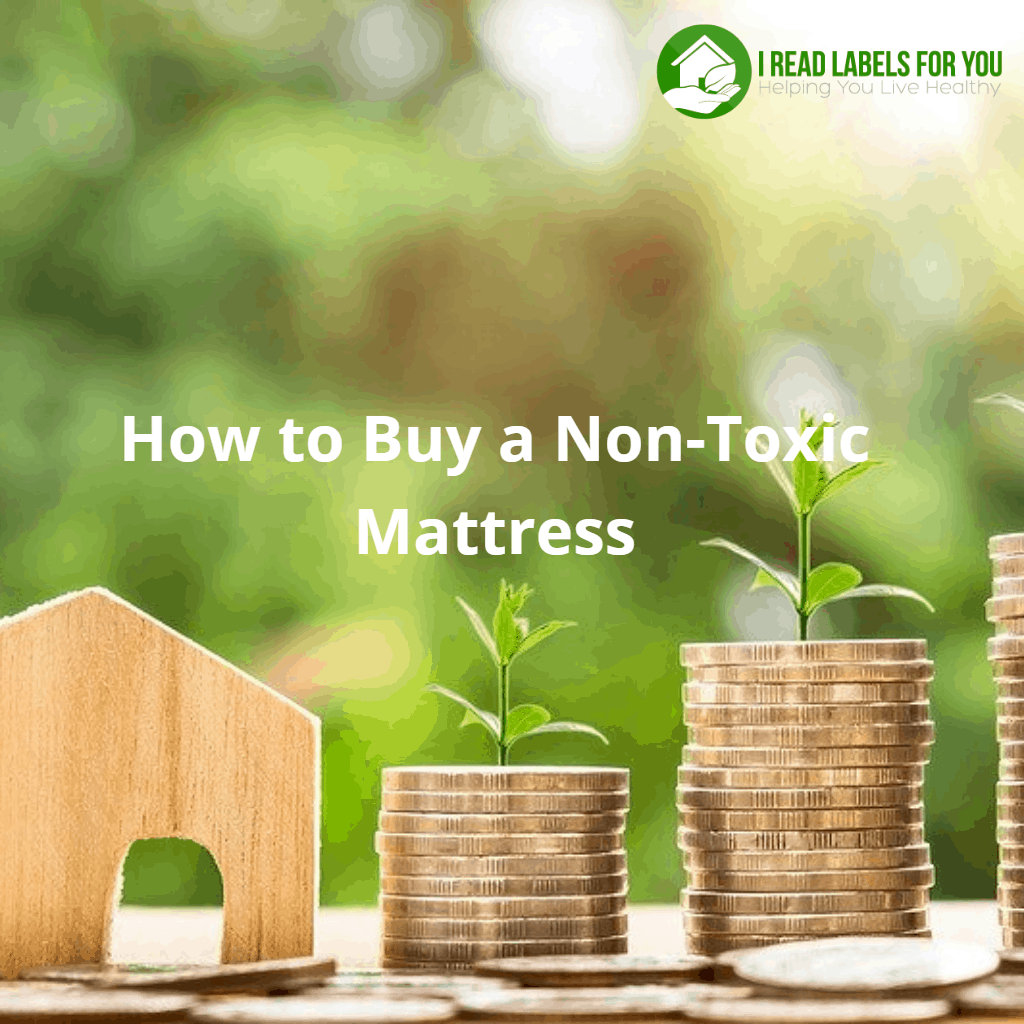
Today you are going to learn a very simple step you can take to make sure that you get a truly non-toxic mattress. You might think that a so-called natural mattress is good enough for you and your family. You might believe that you cannot afford an organic mattress. Instead, you will learn why you might not be able to afford a so-called natural mattress. (I say, “so-called natural mattress,” because the word “natural” has no official definition and means different things to different people.)
Picture this. It’s almost midnight. The house is quiet except for the occasional clicking sound of the computer mouse. It’s been a few hours since you started your search for a non-toxic mattress online. You did not expect it to take this long – everything seemed clear at first. But then you clicked and clicked and clicked on one link after another, one website after another. You are now completely confused about all these organic mattresses. And you regret wasting your time.
Has that happened to you? It was totally me before I started researching consumer products for a living. Even now researching products is very time-consuming. Back when I first started researching mattresses, it took me a year to decide which mattress to buy for my husband and me. Finally, we bought an organic mattress we had fallen in love with. But I kept researching other mattresses for my clients. And still do.
Why did it take me a year to look for a non-toxic mattress?
This is a good question. First of all, I did not want to buy a mattress online because I wanted to lie down on it and try to gauge if it was comfortable. After all, comfort is an absolute must. I also wanted to talk to a salesperson in person.
After I talked to a few different salespeople, I started to notice that they often gave me conflicting information. For example, one salesperson said that Talalay natural latex foam was better than Dunlop natural foam. And other ones said just the opposite. Then I wanted to go and ask other salespeople. Then I emailed companies directly to see if the floor salespeople had given me accurate information about their organic mattresses.
Doing that, I developed a set of questions to ask each company. After I had contacted many companies, I realized I needed to organize my notes. While organizing my notes, I realized that I was not sure if I remembered some information correctly, and so I had to call back some mattress companies.
Some questions I asked while researching a safe mattress
What materials are used in the non-toxic mattress to pass the flame-retardant test?
Because I had just completed researching organic mattresses for cribs (and found the best non-toxic crib mattress for my son) I knew that all mattresses had to pass flammability testing. Called the Federal Open Flame Mattress Flammability Standard, 16 CFR 1633, it went into effect in July 2007. This test is not a cigarette test, but a test imitating burning clothes. The test is so severe that adding flame-retardant chemicals to the mattress foam does not always prevent a mattress from igniting.
From my prior experience, I also knew that mattress manufacturers were not always transparent. In fact, they can trick you into thinking that you are buying a non-toxic mattress, while you are not. You can learn about a mistake I made here.
So, when I heard them say that they did not use flame-retardant chemicals, I asked them what they used instead, and how exactly they passed the severe flammability regulations.
What is the foam of the mattress made of?
Foam is a big part of any mattress, whether it is an organic mattress or not. The bad news is that mainstream mattresses have polyurethane foam, which is a combination of two main ingredients—a polyol, a type of alcohol that can cause death if ingested, and a diisocyanate, a petroleum derivative. While both substances are deadly, the major concern lies with diisocyanates. This is definitely not an eco-friendly mattress.
According to the Centers for Disease Control and Prevention (CDC), deaths were attributed to workers’ exposure to diisocyanates via skin or inhalation (source). As a result, the workers who make the polyurethane foam that we sleep on must wear full-body protective gear and respirators!
Natural latex foam is a great alternative for a non-toxic mattress. There are two types of natural latex: Dunlop and Talalay. Dunlop is denser, and Talalay is softer and airier.
Eventually, I learned that in order to get the healthiest foam that is as natural as it can be without concerning additives, I needed to look for a foam with the Global Organic Latex Standard (GOLS) certification. And then it took me a while to realize that there was no GOLS-certified Talalay foam. I spent weeks trying to make sure that GOLS-certified Talalay foam did not exist and most importantly why that it was.
Are wool and cotton in this mattress organic?
Non-organic wool may contain chemicals used to process it, and these chemicals may cause allergies. As for cotton, according to the Pesticide Action Network (PANNA), there are more insecticides in conventionally grown cotton than in any other single crop. This means that by buying goods made with such cotton, we are significantly contributing to contamination of the environment.
Is there any innerspring system in the non-toxic mattress?
One of the benefits of writing a popular blog is that I receive a lot of emails from readers. I have heard from a lot of people who bought mattresses made of 100% latex without innersprings. They tell me that these mattresses are not comfortable, which makes sense to me. I believe that innersprings help provide proper spinal alignment and support. (Hint: We bought an innerspring organic mattress, and it is super comfortable.)
In addition, people were telling me that mattresses without innersprings grew mold inside. This is definitely not a good thing, especially if you have an autoimmune disease.
And yes, I looked into the electromagnetic fields (EMF) issue. Some of you may have heard about a hypothesis made by two Swedish scientists linking left-sided breast cancer and melanomas of the arms and feet to standing radioelectric waves that may be created above innerspring beds.
Concerned, I hired bau-biologists to measure EMF levels in my bedroom and the whole house. To my relief, our non-toxic mattress was not a problem. We did discover some EMF problems in our house, which we were able to fix.
What material are the mattress coils wrapped in?
I wanted to make sure that the fabric wrapping the coils didn’t emit toxins while I was sleeping on them. By the way, coil wrapping is important because it prevents noise and improves comfort.
What type of adhesives are used in the non-toxic mattress?
Another good question I asked was about adhesives. You do not want glues that contain formaldehyde, a chemical known to the State of California to cause cancer. Make sure you get as much information as possible about the glue, ideally the name of the glue and the list of its ingredients. If the seller tells you that there are no adhesives, find out what method they use to hold things together in the mattress. The best methods include sewing, sealing with heat, and using metal clips.
What is the mattress binding (“tape edge”) made of?
This question arose after one of the mattress sellers told me that they had Teflon binding. Surely, I didn’t want Teflon in my bed. So, I wanted to know what others were using.
What kind of facility was the non-toxic mattress made in?
You want to make sure that there is no cross-contamination. Ideally, the facility is used to make only non-toxic organic mattresses without flame-retardant chemicals.
Is your organic mattress GOTS-certified?
At some point, I learned about the Global Organic Textile Standard (GOTS) and about its importance. GOTS can certify a mattress cover, a facility, and a whole non-toxic mattress.
GOTS does not only guarantee that cotton is of organic origin and that the wool comes from organic sheep. In fact, that is the USDA National Organic Program’s job. GOTS also certifies that the entire supply chain (processing, manufacturing, packaging, labeling, trading, and distribution) is environmentally and socially responsible. It also does not allow harmful chemicals during the mattress manufacturing process. Among other things, heavy metals, aromatic solvents, formaldehyde, GMOs, and nanoparticles are prohibited in the sourcing, manufacture, and distribution of GOTS-certified products.
Double-checking GOTS certificates
Once I learned of the importance of GOTS certification for an organic mattress, I started asking for GOTS certificates. I still remember how unpleasant it was. Back then, I was not quite sure what a typical GOTS certificate should look like. Some male salespeople made me feel small (and I’m almost 6 feet). They questioned why I even asked for a certificate when they already told me that their organic mattress had GOTS certification. Neither could I get any convincing answer as to why the certificate expiration date was overdue. So, I had to double-check my information.
Now you probably understand why it took me a year to be ready to buy a non-toxic mattress.
The Great News about an organic mattress
Now mattress companies show their certificates more readily. In fact, many companies post them on their websites. You just must make sure that the certificates the manufacturers show you are the right ones and are not transaction or supplier certificates. And, of course, you should check that the dates have not expired.
And now the Greatest News Ever about finding a non-toxic mattress
Now I am going to tell you something simple and super helpful that I did not know back then. I wish I knew it at the time. But, apparently, for me to find it out I had to go through the long journey.
You can check whether the whole organic mattress is GOTS-certified and is made in a GOTS-certified facility by searching for it in the GOTS public database. You do not even need to talk to the mattress company customer service or salespeople.
If a mattress has GOTS certification, I think you can rest assured that you are buying a truly non-toxic mattress. And if you can’t find it in the database, you must decide whether you want to go through a similar long list of questions I outlined above and trust their words or move on.
Luckily, there are many GOTS-certified mattresses on the market today. So, your choice is quite expansive.
Conclusion about buying a non-toxic mattress
May I make some suggestions? You are more than welcome to follow my lead and go for a GOTS-certified organic mattress that we bought. You can read about it in my review of the best organic mattress. Keep in mind that the same company now makes a budget-friendly organic option. You can read about my review of the affordable non-toxic mattress here. You are also welcome to book a consultation with me – I will be happy to assist you! For the details, please click here.

Download The Free Guide!
5 Powerful Steps To A Non-Toxic Home
Join our informed consumer community and get our free guide the “5 Powerful Steps To A Non-Toxic Home”.

 Written by
Written by 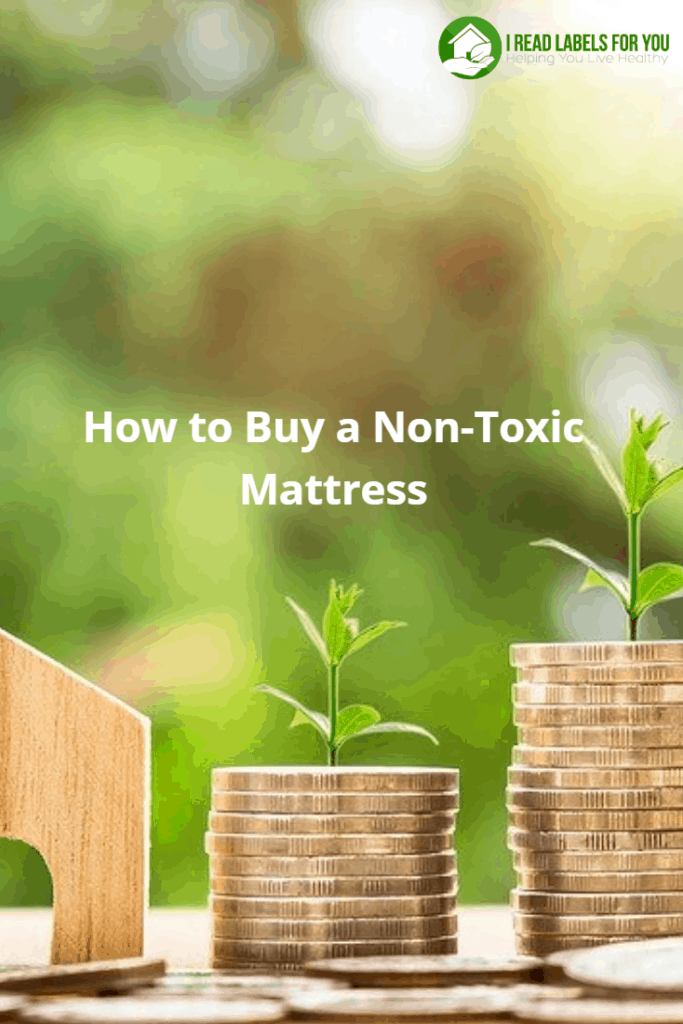
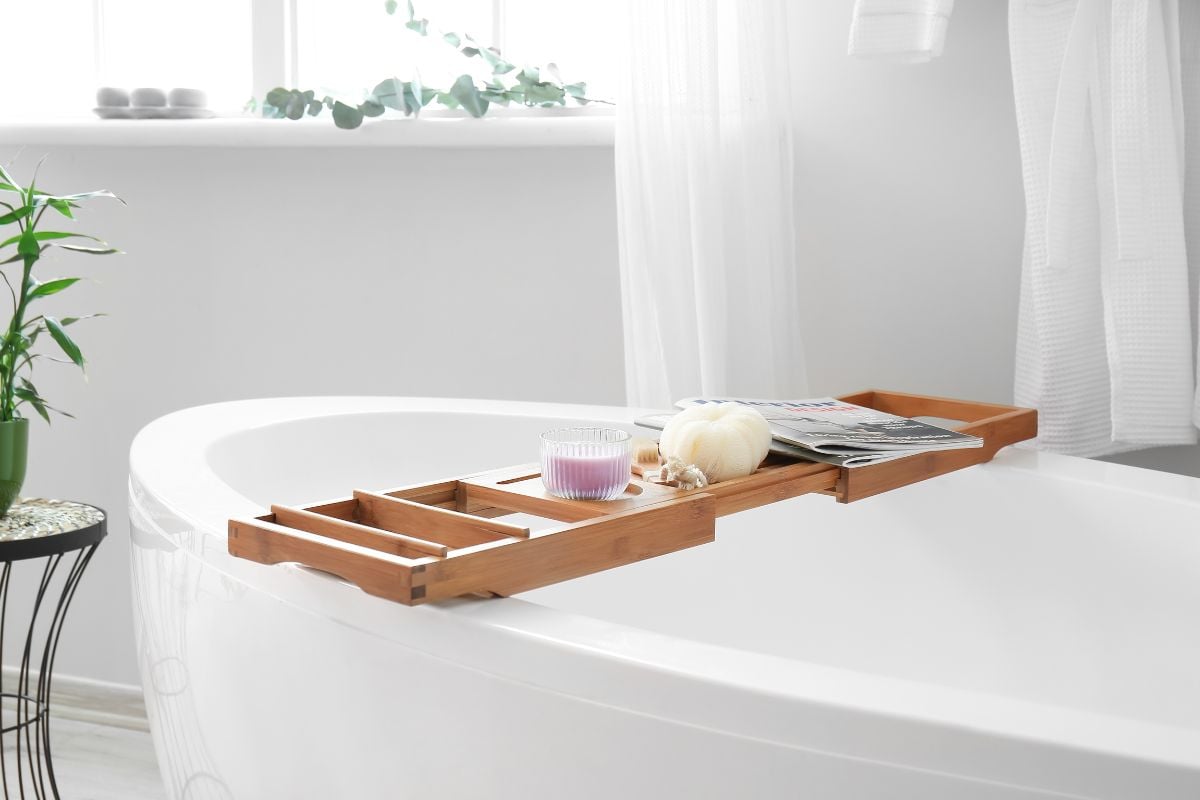

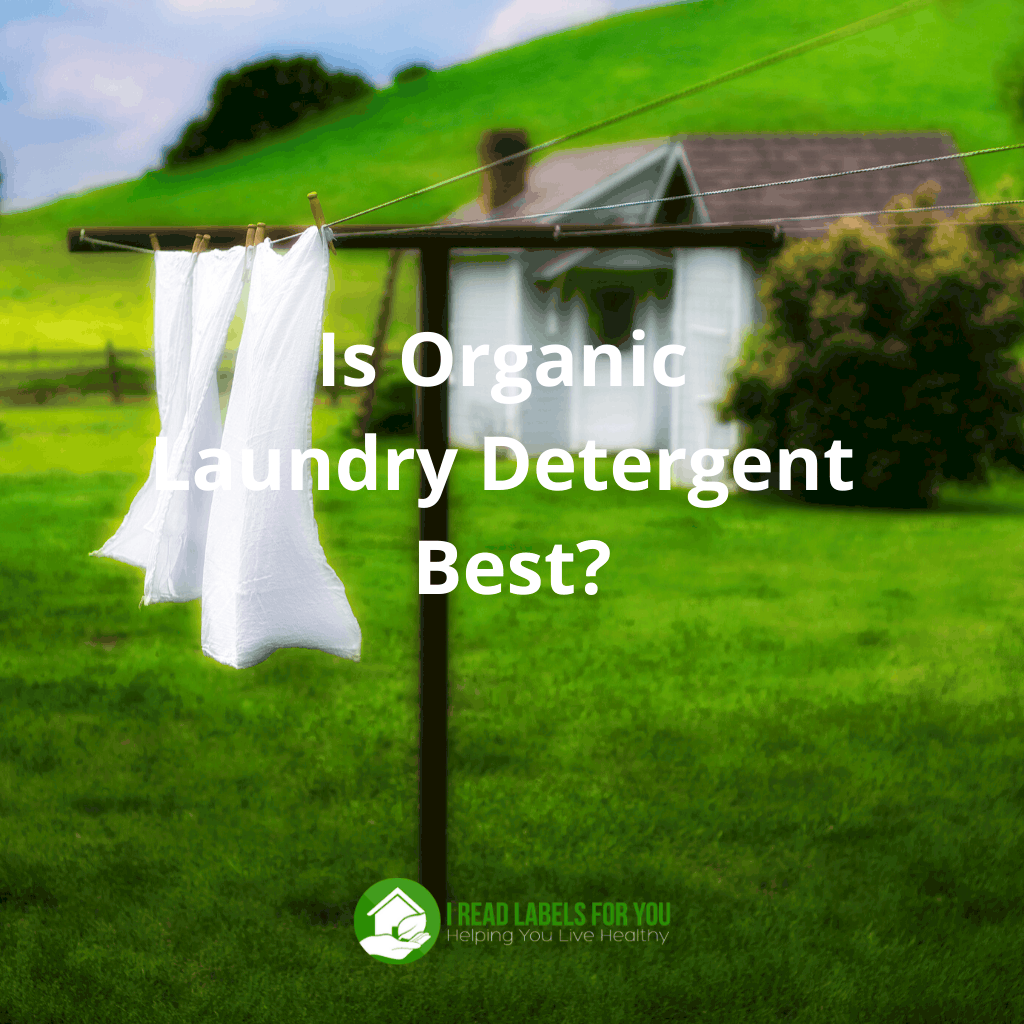
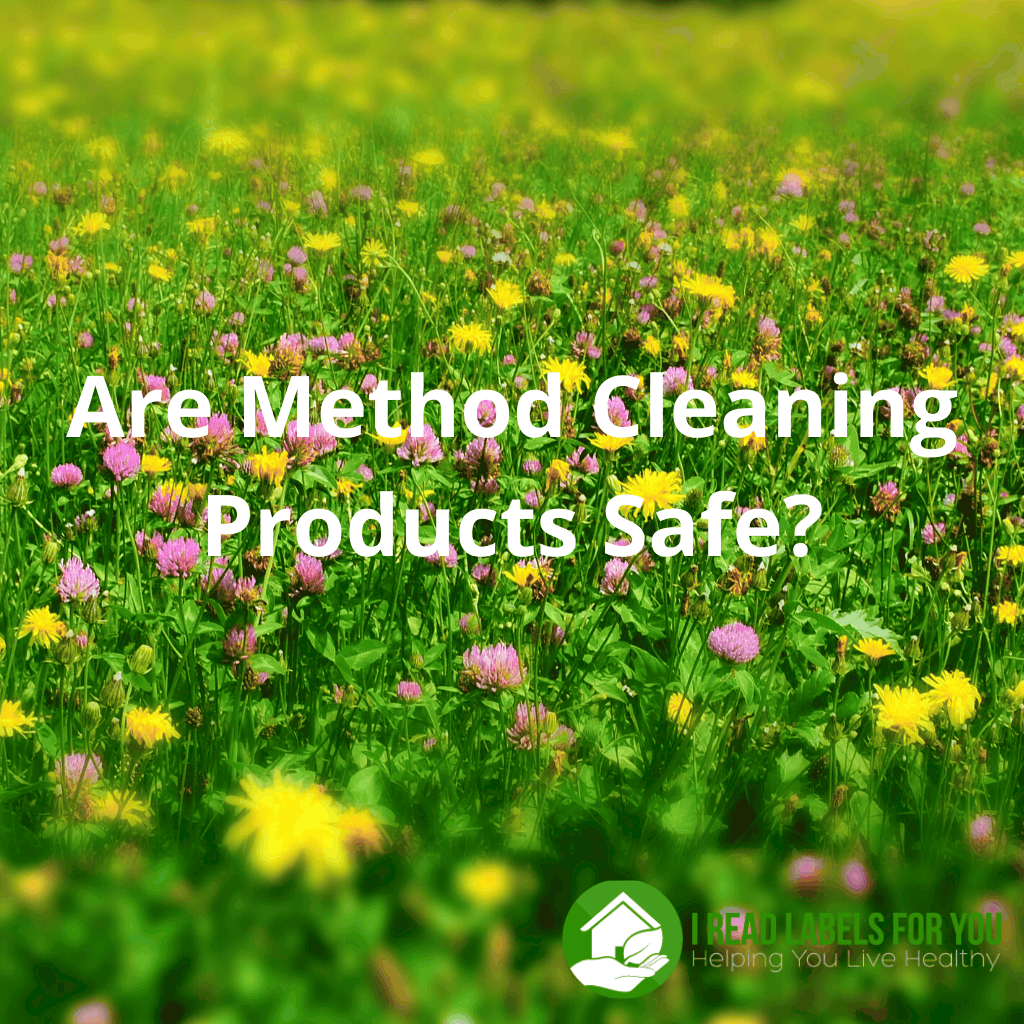


I have a latex allergy. I am looking for the safest mattress possible so this means I also can not have a mattress that contains coconut. I am a side sleeper. Do you have any recommendations?
Hi, Cathleen! Thank you for reaching out to I Read Labels for You! Have you read our post about latex-free mattresses? What do you think? https://ireadlabelsforyou.com/products-i-like-latex-free-organic-mattress/
Hi Irina, how about nectar? I’ve been finding different information online? Is CertiPUR certified bad actually??
Thank you for your time
Hi, Mili! Thank you for the question! Based on our multiple-year research, we recommend Naturepedic and its branch Happsy. For details that are not described in the post, please take advantage of our service of a private consultation with Irina: https://ireadlabelsforyou.com/services/
Hi! Have you heard anything about My Green Mattress? They seem pretty transparent with their materials and their price point is lower than Naturepedic. I’ve called both companies (2 times each) while trying to pick which one to try. Each time I asked the reps on the phone for their personal experience, neither of the Naturepedic reps used their companies product, however the My Green Mattress ones did.
Hi, Tamara: Tell My Green Mattress that they have an expired GOTS certificate on the website and the second page is not showing. Ask them they have a better certificate. Thanks. By the way, we have been sleeping on a Naturepedic mattress for 2 years now, and it is VERY comfortable. We love it! Have you seen my post about Naturepedic? ~Irina
I have read your post about Naturepedic, one of my concerns is that the closest place for me to test one out is over 3 hours away. 🙁 I need to get 4 mattresses, so my thought was to start with one (probably the smallest size that I need which is a twin) and go from there. My ultimate goal is to have a comfortable and non toxic mattress for every family member. I also want to be conscious of cost, which is why My Green Mattress has my attention (I can return for a $99 fee, vs 50% and $300 to ship back to Naturepedic). I was wondering if there is anything that stands out between the two that should influence which one I purchase.
Hi, Tamara:
To start with, I want to say that I have not researched My Green Mattress as closely as Naturpedic. When I went on My Green Mattress website I noticed that their GOTS certificate has expired and the one they have posted seems to be missing the second page so it is impossible to say which products that certificate applies to. In my opinion, it is important for a mattress company to certify their products (not just a facility) because then it gives us consumers a peace of mind that most materials used are at very least natural without synthetic undisclosed additives. Does it help? ~Irina
Thank you for the helpful information! Wool is a natural fire retardant and I am glad you pointed that out. I hope more people spear some time and read your story! We bought our mattress from ‘The Home Of Wool’ (https://www.etsy.com/shop/TheHomeOfWool). They make pure wool mattresses. I was very satisfied with the quality of fabrics (100% natural cotton, wool, silk, flax), craftsmanship and customer service. My wife and I decided to change our son’s latex mattress and our choice is, naturally, ‘The Home of Wool’ again.
The mattresses look great. But my fear is that they are too firm. What do you think?
I recently bought a greenguard gold certified crib mattress from simmons, and was upset to see the tag read 24% polyester fiber and 6% polyurethane foam pad. How can this be advertised as low toxicity? I feel swindled!
Can you give me a “specific” company that uses non-toxic materials? I have been researching this for a couple of years and am lost in the info. Who to believe? Many companies tell you that they use non-toxic materials. They say their wool allows them to pass the fire test. We are looking at Holder Mattress in Indianapolis and Beds By Design in Harbor Springs. I am not too worried about the springs just chemicals as both of these companies use inner springs. Please advise! Thank you! Margo
Hi, Margo, thank you for stopping by. Please refer to my post here for a specific company. They use springs but I am learning that it might be a good thing from the comfort standpoint. My blog readers tell me that 100% natural latex mattresses are not comfortable for them.
Margo… did you find out any more information about Beds by Design? I know this post is old, but wonder if you found out any information on whether their beds are truly non-toxic? Thank you! Kylie
thanks so much! I was wondering, any thoughts on room and board mattresses? They claim to test for VOCs…thanks!
It is still polyurethane foam. I will talk about in my next post. You might want to subscribe to receive my emails. Thank you, Charu.
H Irina,
did you ever do the new blog post you mentioned? I didn’t see it anywhere.
Hi Leila, thank you for asking. Let me know if you have ideas how to make my website easier to navigate. Here is a post with a specific mattress recommendation. More posts about mattresses will follow.
I would like a non-toxic mattress, however, I do not want any latex, or natural rubber in the mattress. do you have any suggestions?
Coincidently, my next post is going to be about a customized non-toxic mattress that has a latex-free option. Make sure you are subscribed to receive my blog updates by email so you do not miss the post. Let me know if you are still looking for a mattress after you read the post. Thank you for your comment!
Hi, Kirsten. I’m at Naturepedic and was reading some nice things about us on a recent post here (I’ve been caught, but who doesn’t like to read good reviews of their company!) and saw your comment. Are you looking for an adult mattress? Naturepedic has organic mattresses made completely without latex, including our Adagio, Essentials, and EOS. If you’re looking for a crib mattress, we never add latex since it could be a potential baby allergen.
Do the Naturepedic mattresses sleep warm? We currently own an organic latex mattress but it is not comfortable and sleeps way too hot for us.
Take a look at Naturepedic mattresses – their entire concept is to make a healthy mattress. They use organic cotton, and the foam they use is plant-based, organic, and contains NO petrochemicals. The company started making safe crib mattresses for babies, and now makes regular mattresses, too. The company is in Ohio, mattresses are made by Amish craftsmen, of materials from USA. They also make pillows and bedding – all organic & not toxic.
http://www.naturepedic.com/education/indexYOU.php
I recommend Naturepedic crib mattresses in this post. I will be posting about their adult mattresses soon. Thank you for the helpful comment!
great article! have you found a mattress that fits the criteria? pillows?
I did and for a very reasonable price. Very excited. Email me for details.
Do you have any suggestions for mattresses? Have you heard of organopedic? I think they’re a local Bay Area company. We’re looking for a mattress now so I’m interested in finding out more about good companies. We were also looking at ergovea, but the mattress is cotton based and now I’m weary.
The mattresses you mentioned are not bad options at all, of course it also depends on your personal preferences. I was doing shopping for a client and I found a great option for a very reasonable price. The mattress is made of organic latex, eco wool and covered with organic cotton. Nothing else. Simple and pure.
I know ergovea makes a fantastic mattress. I think one of the only true eco-friendly options without any sort of off gassing. Great choice IMO.
Hi Jason: Are you a representative of Ergovea or their retailer or simply own a Ergovea mattress? Is the natural rubber foam 100% natural rubber without blends? From the description, these mattresses seem too firm. Do you they offer softer ones? ~Irina
HI Irina, I’ve been to the parent store in Auburn, CA called Tucked in. The founder of Ergovea who owns this store can order the mattress in various levels of softness. I preferred the firmer side myself. My understanding is the rubber is of extremely high quality sourced from a sustainable private rubber tree farmer in India. And everything then is manufactured to very high standards in the US. – After an exhaustive search with many different manufactures and price points, I was really blown away by Ergovea’s line. Though they’re on the higher end as fully organic latex mattresses go. The quality, durability, and longevity is built into this brand like no other mattress I have ever bought. – I know it’s a difficult and confusing search, best of luck.
Thank for your information about the non – toxic mattress. Of course, this information is very useful for anyone, including me. Because we are all always sleeping using the mattresses. If stuffing mattresses are not safe from the toxic, we naturally become unhealthy. Who will like it?